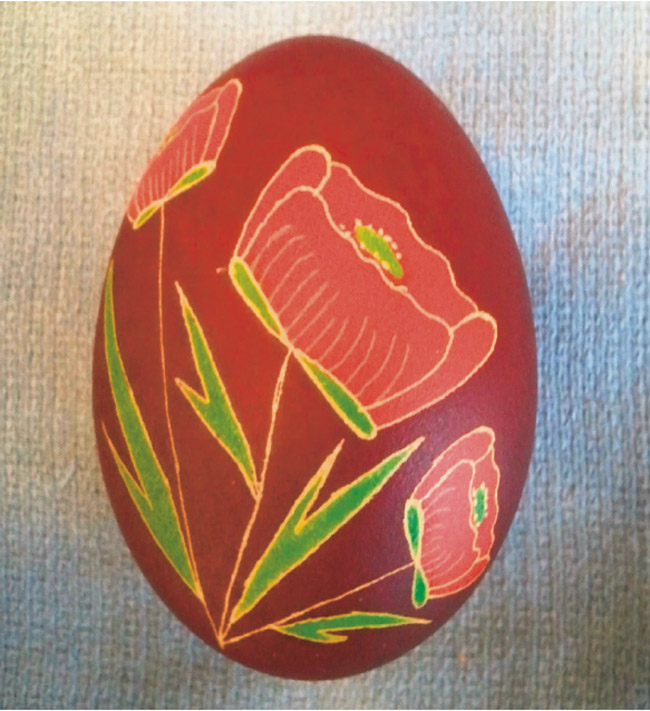Art & Stage: You Won’t Find These In A Nest
They’re goose, duck and ostrich eggs, but they flaunt colors and patterns prettier than how their mama made them. Their exquisite markings are produced by the artistic hands of Kaneohe’s Kent West.
“I create one-of-a-kind, fine works of art upon nature’s most sensuous canvas -an egg,” says West. “Using a batik, or wax- and dye-resistance process that originated in the Ukraine, I impart various designs that range from traditional Ukrainian folk art to Hawaiian-based themes.”
A 1972 article in National Geographic magazine, “Easter Greetings from the Ukraine,” was what first grabbed West’s attention. He’s never taken an art class and he has no Ukrainian roots, but was so taken with the story on the ancient art of pysanky, or “writing with wax,” that he researched the tools and process and taught himself how to do it. He’s been at it ever since.
The dying process involves a lot of layering by first immersing the empty shell in aniline dye, then applying hot beeswax to set the color so that it retains each color layer through repeated dye-and-wax sessions. Lighter colors are applied first.
“Once all of the colors have been applied – each one preserved by the waxing process – and the design is finished, the wax gets melted off of the entire shell, and the magic of what was created is revealed,” says West.
West then applies a varnish to preserve his attractive, delicate creation. The eggs remain fragile but will last when handled with care. Rather than a common chicken egg, West uses duck, which is a bit bigger; goose, which is much bigger; and ostrich, which is as large as a cantaloupe, therefore providing a larger canvas – and at one-sixteenth of an inch thick, one that is significantly more durable. In the Ukraine, the eggs are given as gifts to friends and family during Easter and Lent.
“Eggs are revered in many cultures around the world and have significant symbolic and spiritual meanings,” notes West. “Most predominantly, eggs represent new life, new beginnings, birth or rebirth, transformation, the circle of life – these being relevant for the Easter and Lent season.”
There are various ways to dye eggs, but West says the Ukrainian method is unusual in that it’s not just about the craft itself. The designs and colors used give individualized meaning to each creation, with particular symbols communicating a specific message to the receiver. For instance, a rose may signify rebirth; a ram’s horn, strength; or diamonds, knowledge. As for colors, white represents purity; gold, wisdom; red, happiness and passion; blue, health; green, wealth; and so on.
“One of the most enjoyable parts of the experience is, if I am collaborating with someone to create a piece, to see their reaction when they see the final piece,” says West. “I know what is going into it during the creating process, but the outcome is very unpredictable, since the design is covered with wax while creating.
“The creation process also is meditative for me. It is healing,” he adds. “I have taught several classes to young and old alike – the smile it brings to people and sharing the rich history about this ancient art form is truly fulfilling.”
Contact West at 772-0283 or eggsactlyinhawaii.com.







